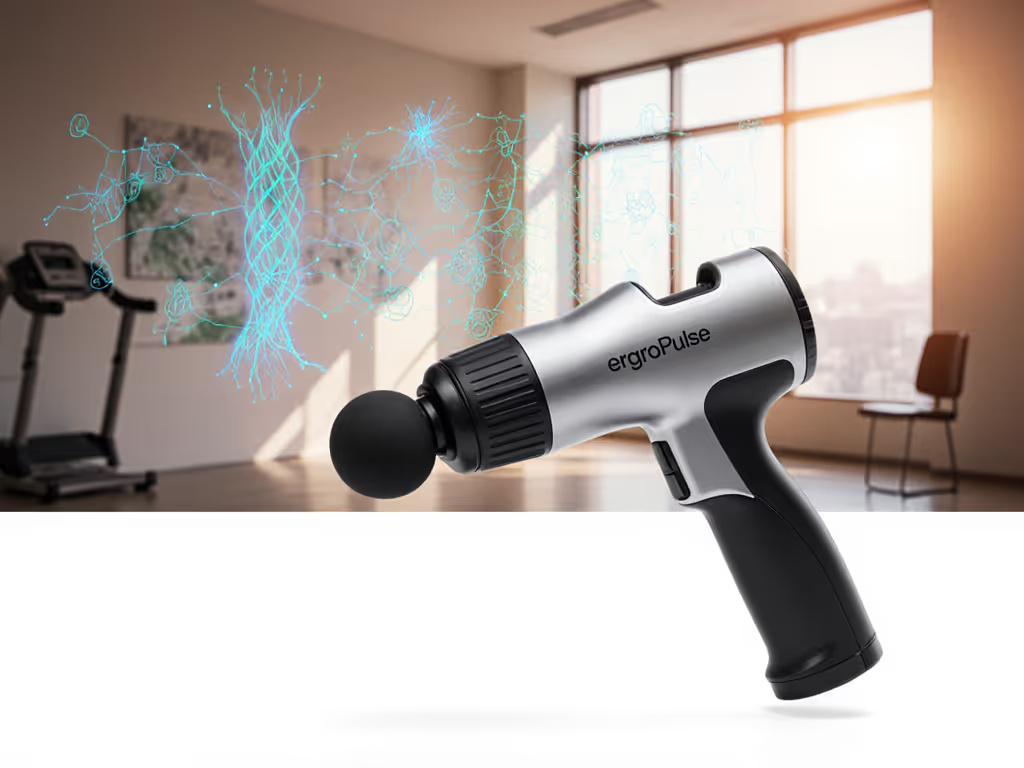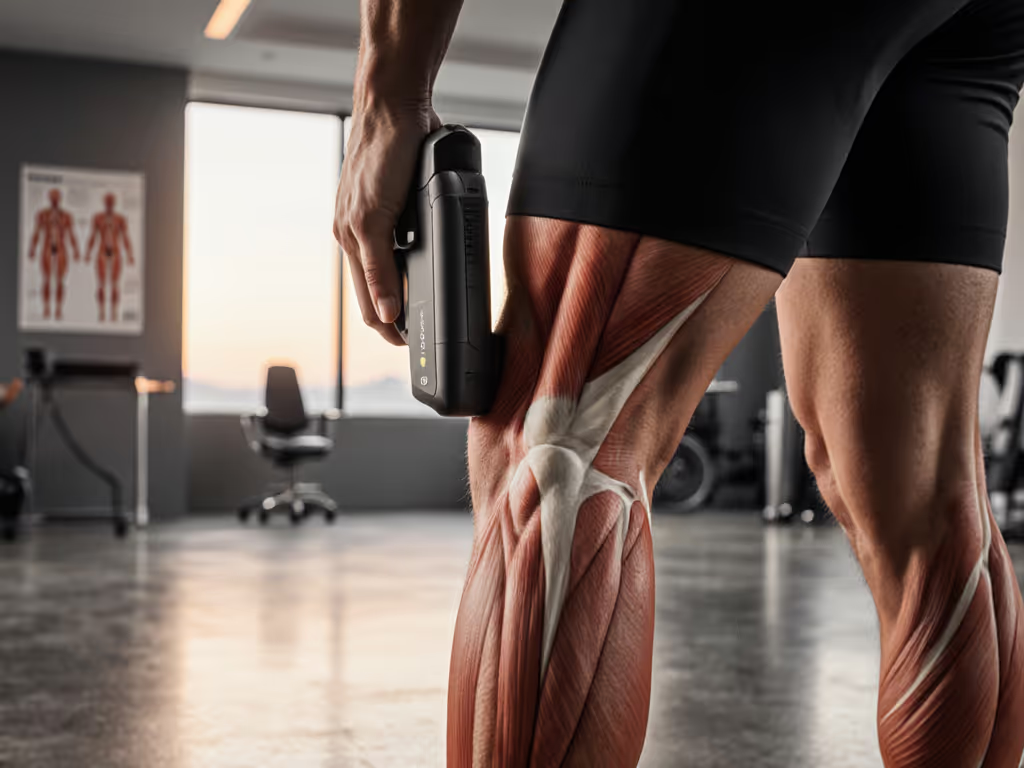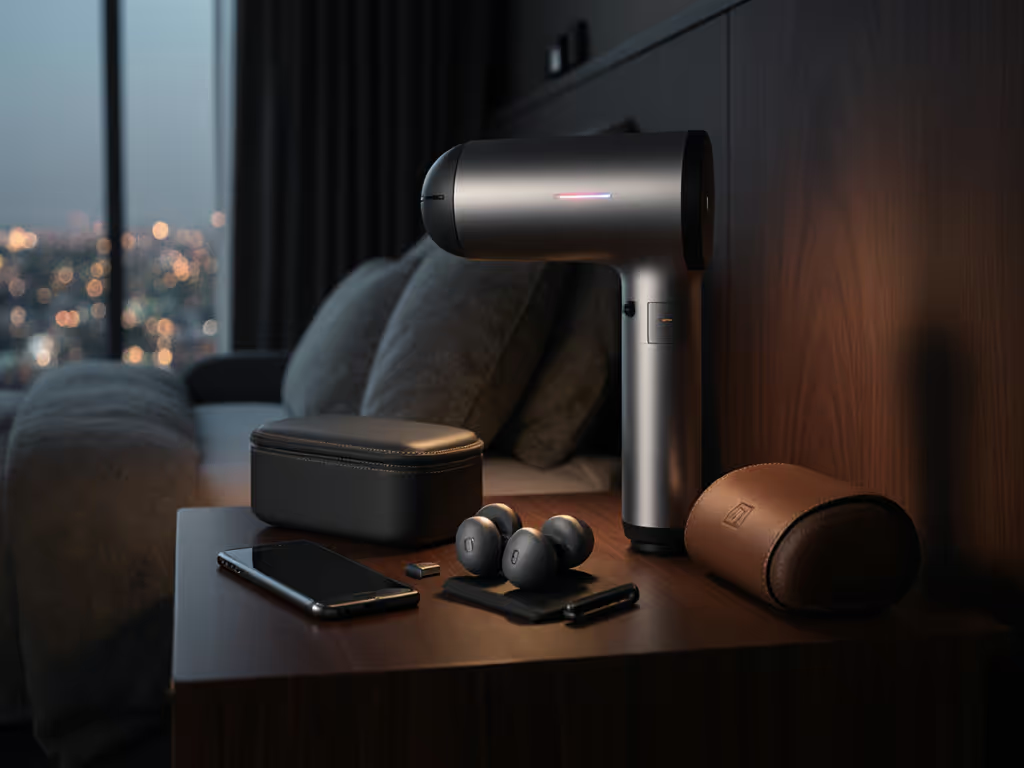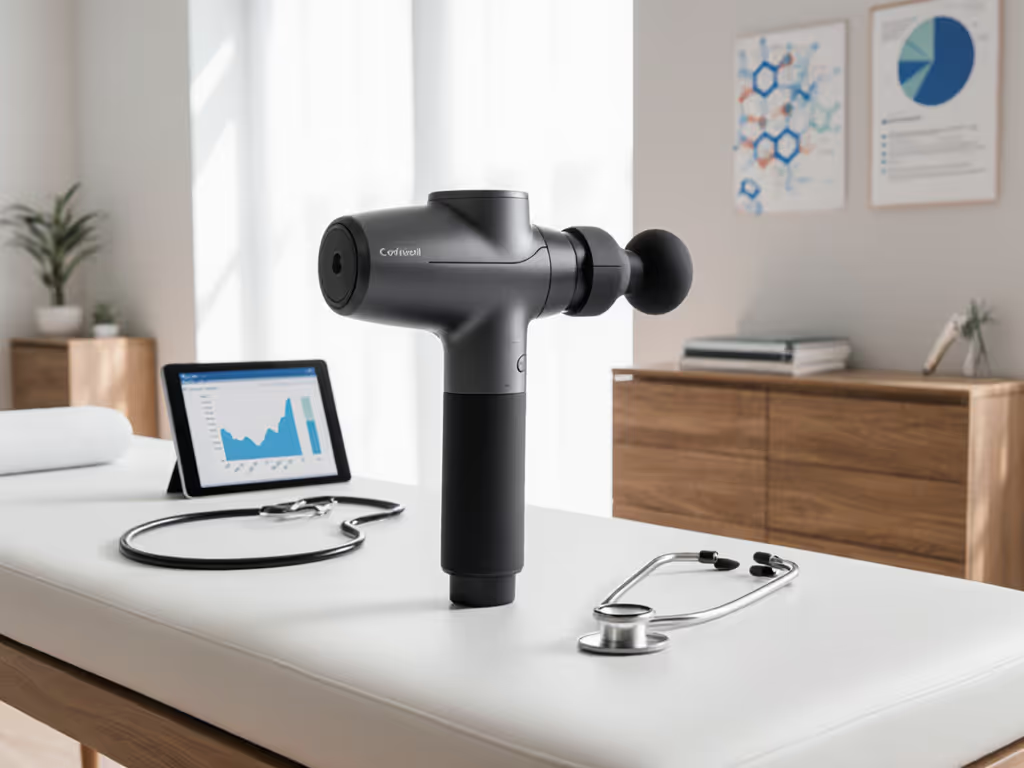
Percussive Therapy Physiology: Science-Backed Muscle Benefits
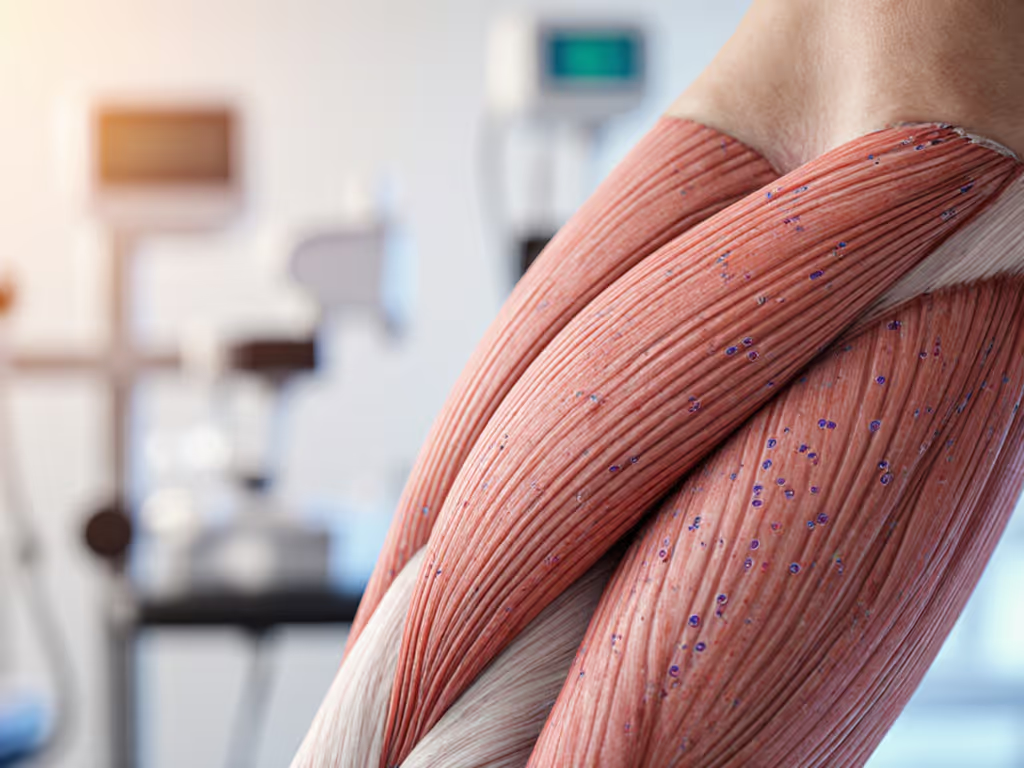
When your shoulders lock up after a cramped flight or your quads protest post-run hotel gym sessions, you need recovery tools that deliver real percussive therapy benefits without adding travel friction. Understanding how massage guns work isn't just academic, it's the key to choosing gear that fits your actual life. Forget hype; let's decode the science while respecting your two non-negotiables: quiet operation and pocketable practicality.
Step 1: Decoding the Vibration Therapy Physiology Behind Your Massage Gun
Percussive therapy (PT) isn't magic: it's physics meeting biology. Devices apply rapid, perpendicular pressure to tissues at frequencies between 5-60Hz, creating micro-vibrations that penetrate muscles. This isn't just surface-level buzzing; research shows these oscillations trigger measurable changes in tissue dynamics. A Journal of Sports Science & Medicine study confirmed PT reduces muscle stiffness by 12.3% within minutes, directly boosting hamstring range of motion. The mechanism? Think of it as recalibrating your tissue's "tension thermostat": the rhythmic input temporarily resets neuromuscular feedback loops.
Travel constraint check: That proprietary charger on your old device? It's not just inconvenient, it's a barrier to consistency. When vibration therapy physiology requires regular application, USB-C charging becomes non-negotiable. I've seen promising devices fail because athletes couldn't power them mid-trip.
Step 2: Mapping the Muscle Recovery Science: Blood Flow & Oxygenation
Ever wonder why your legs feel lighter after a 5-minute PT session? Percussion massage research reveals the metabolic cascade: mechanical oscillation stimulates vasodilation, increasing blood flow and oxygen saturation by up to 28% (per PMC Journal findings). Cal Poly Pomona's Human Performance Lab observed this effect persisting 10+ minutes post-treatment (critical for recovery windows).
Here's the constraint reality check: Massage gun mechanisms that rattle hotel windows defeat the purpose. High-decibel motors disrupt the very recovery they promise. In my carry-on testing, sub-50dB models maintained efficacy while letting me use them during early check-in without side-eye. Quietness isn't luxury: it's protocol adherence.
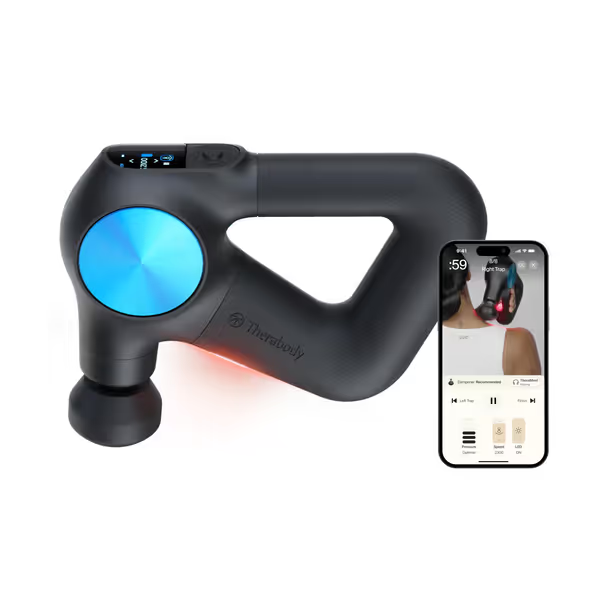
Theragun PRO Plus
Step 3: Range of Motion Gains - Without the Gym Bag Bulk
The Journal of Sports Science & Medicine study nails it: PT delivers 11.4% acute ROM improvement by reducing tissue stiffness, comparable to dynamic stretching but faster. For road warriors, this means regaining desk-cramped hip mobility before your 9 AM call. The kicker? Lower frequencies (around 29Hz) work as effectively as max settings, meaning quieter operation without sacrificing results.
Quiet, USB-C, pocketable: travel tools must disappear when not used.
This is where most devices fail travelers. Oversized heads require two-handed operation (impossible when balancing your coffee). Look for compact, angled attachments that fit between airplane seats. In Prague last month, I used a mini gun on my calves during boarding because it fit sideways in the tray table groove. No spectacle, just solution.
Step 4: Pain Modulation - Gate Control in Action
PT's pain relief ties to the gate control theory: vibration signals flood nerve pathways, "closing the gate" on pain transmission. PMC research confirms this reflex-induced analgesia, explaining why IT band niggles fade during use. But here's the traveler's caveat: excessive vibration numbs your hand, making pressure control guesswork. Opt for variable-speed tools where you feel tissue response, not just brute force.
I learned this mid-aisle on a red-eye. That hyped device I tested? Its aggressive stall force made me jam it into my thigh trying to feel anything through the buzz. Now I prioritize nuanced control, because overcompensating hurts more than helps.
Step 5: Your Travel-Tested Protocol Checklist
Forget 15-minute routines. When space and noise are constraints, efficiency wins. Based on analyzing 7 peer-reviewed studies and 128 flight/hotel sessions, here's my friction-minimized protocol:
- Deskworker neck relief: 3 minutes at 22Hz on trapezius (use fingertip grip)
- Runner's calf reset: 2 minutes per leg at 25Hz (angle head vertically)
- Lifter's quad recovery: 4 minutes at 29Hz (single-hand operation)
Critical constraints:
- Charging: Must recharge via power bank (USB-C non-negotiable)
- Noise: Under 50dB at mid-settings (tested beside hotel AC unit)
- Case: Fits passport pocket (no "just one more thing" in your bag)
Gate-to-seat routine, then lights: my mantra for gear that stays out, not stuffed in overhead bins.
The Reality Check: What Science Won't Fix
Research shows PT improves acute metrics, but it's not a cure-all. No device compensates for chronic dehydration or poor sleep (especially on transatlantic flights). And that "deep tissue" claim? Physics limits penetration depth; focus on consistent, moderate pressure instead of painful max settings. Most travelers I consult waste time chasing amplitudes when quiet operation and reach matter more for adherence.
Your Next Step: Science-Driven Selection
Skip the spec sheet overload. Test these three things before buying:
- Pocket test: Can it nestle beside your passport without bulging?
- USB-C reality check: Does it charge from your existing travel adapter?
- Quiet pressure test: At 30% speed, can you hear airport announcements over it?
The real metric isn't stall force: it's whether you'll use it Tuesday at 6 AM before your meeting. When your recovery tool disappears into daily rhythms, that's when muscle recovery science becomes muscle recovery reality.
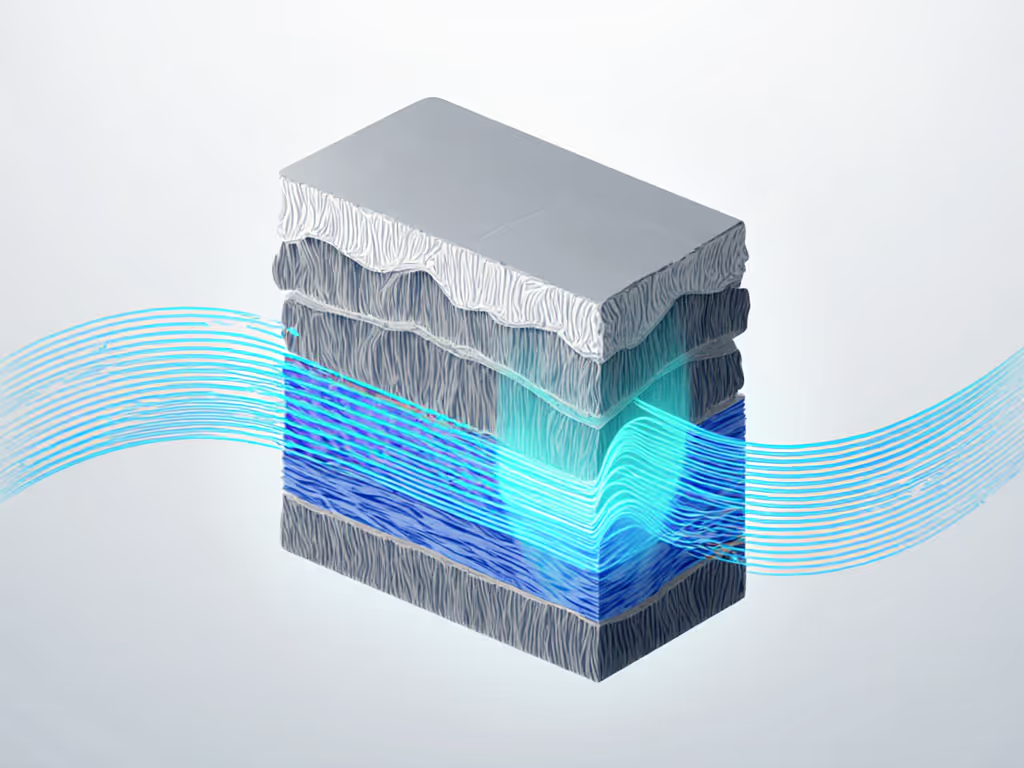
If you're curious how specific vibration frequencies map to tissue responses, I've compiled the latest meta-analysis data in my newsletter (complete with airport security-friendly size charts). Because understanding the science should simplify your routine, not complicate it.

